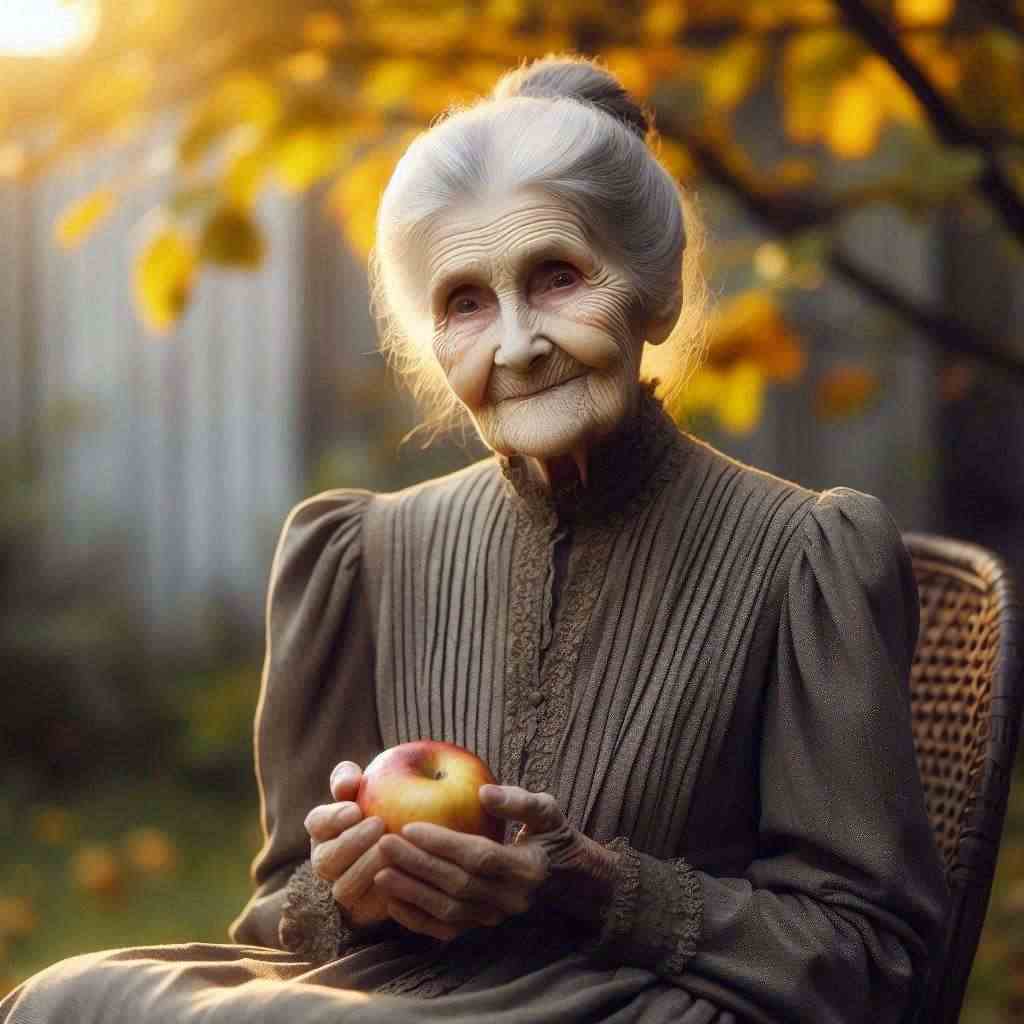Beautiful Old Age
D. H. Lawrence
1885 to 1930

Want to track your favorites? Reopen or create a unique username. No personal details are required!
It ought to be lovely to be old
to be full of the peace that comes of experience
and wrinkled ripe fulfilment.
The wrinkled smile of completeness that follows a life
lived undaunted and unsoured with accepted lies
they would ripen like apples, and be scented like pippins
in their old age.
Soothing, old people should be, like apples
when one is tired of love.
Fragrant like yellowing leaves, and dim with the soft
stillness and satisfaction of autumn.
And a girl should say:
It must be wonderful to live and grow old.
Look at my mother, how rich and still she is! -
And a young man should think: By Jove
my father has faced all weathers, but it's been a life!
D. H. Lawrence's Beautiful Old Age
Introduction
D. H. Lawrence's poem "Beautiful Old Age" presents a poignant and idealistic vision of aging, challenging societal norms and offering a fresh perspective on the twilight years of human existence. This essay will delve into the intricate layers of Lawrence's work, examining its thematic richness, stylistic nuances, and broader implications within the context of modernist literature and the human experience.
Thematic Analysis
At its core, "Beautiful Old Age" explores the concept of aging as a process of ripening and fulfillment rather than decay. Lawrence employs a series of powerful metaphors and sensory imagery to convey this idea, most notably the recurring motif of apples. The comparison of elderly individuals to "apples" and "pippins" suggests a natural progression towards sweetness and completion, rather than deterioration.
The poem's opening lines, "It ought to be lovely to be old / to be full of the peace that comes of experience," immediately establish the author's thesis. Lawrence posits that advanced age should be a state of serenity and wisdom, acquired through a lifetime of authentic experiences. This notion challenges the prevalent fear and aversion to aging in many societies, offering instead a celebratory and almost enviable view of elderhood.
Imagery and Sensory Appeal
Lawrence's mastery of imagery is evident throughout the poem. The "wrinkled smile of completeness" vividly captures the physical manifestations of aging while simultaneously imbuing them with positive connotations. This juxtaposition of the visual (wrinkles) with the emotional (completeness) creates a powerful and memorable image that encapsulates the poem's central theme.
The sensory appeal extends beyond the visual, incorporating olfactory elements as well. The elderly are described as being "scented like pippins" and "Fragrant like yellowing leaves," invoking autumnal aromas that are generally associated with warmth, comfort, and natural beauty. This multi-sensory approach enriches the reader's experience and reinforces the poem's positive portrayal of aging.
Structural and Stylistic Elements
The poem's structure is noteworthy for its free verse form, which allows Lawrence to express his ideas with a natural, almost conversational flow. This choice aligns well with the poem's content, as it mirrors the ease and freedom that the author associates with ideal old age.
Lawrence's use of enjambment throughout the poem creates a sense of continuity and flow, mirroring the seamless progression of life into old age that he envisions. For example, the lines "The wrinkled smile of completeness that follows a life / lived undaunted and unsoured with accepted lies" flow into each other, emphasizing the connection between one's choices in life and the quality of one's elder years.
Symbolism and Metaphor
The apple metaphor, central to the poem, carries rich symbolic weight. Apples have long been associated with knowledge, temptation, and sin in Western culture, particularly in the context of the biblical Garden of Eden. By recasting the apple as a symbol of ripened wisdom and contentment, Lawrence subverts this traditional symbolism, suggesting that true knowledge and fulfillment come not from youthful transgression but from a life fully lived.
The autumn imagery that pervades the poem serves as an extended metaphor for the later stages of life. Traditionally, autumn is associated with decline and approaching death, but Lawrence transforms this convention. In his vision, autumn becomes a season of "soft stillness and satisfaction," rich with the accumulation of life's experiences.
Gender and Generational Perspectives
Lawrence introduces an intriguing generational and gender dynamic in the poem's final stanza. The imagined reactions of a young girl and a young man to their elderly parents offer different perspectives on aging. The girl's response, "It must be wonderful to live and grow old. / Look at my mother, how rich and still she is!" emphasizes the beauty and serenity of old age. The young man's reaction, "By Jove / my father has faced all weathers, but it's been a life!" focuses more on the experiential aspect of aging and the resilience it requires.
These gendered responses could be interpreted as reflecting societal expectations of the time, with women valued for their serenity and men for their ability to weather life's storms. However, Lawrence's overall message seems to transcend these gender divisions, advocating for a universal appreciation of the wisdom and completeness that come with age.
Context within Lawrence's Oeuvre and Modernist Literature
"Beautiful Old Age" exemplifies several characteristics of Lawrence's broader body of work, including his focus on nature, his challenge to societal norms, and his exploration of human relationships and life cycles. The poem's positive view of aging and its emphasis on living authentically align with Lawrence's philosophy of vitalism and his critique of modern industrial society.
Within the context of modernist literature, this poem stands out for its optimistic tone. While many modernist works grappled with disillusionment and the fragmentation of traditional values, Lawrence offers a vision of wholeness and fulfillment achieved through the natural process of aging. This perspective provides a counterpoint to the often bleak outlooks of his contemporaries, suggesting that meaning and beauty can be found in the full span of human life.
Philosophical Implications
The poem raises profound philosophical questions about the nature of a life well-lived. Lawrence suggests that true fulfillment comes from living "undaunted and unsoured with accepted lies," implying that authenticity and courage are key to achieving a beautiful old age. This perspective resonates with existentialist philosophy, which emphasizes personal responsibility and authentic living.
Moreover, the poem challenges the cult of youth prevalent in many societies. By presenting old age as a state to be admired and aspired to, Lawrence invites readers to reconsider their values and their approach to the aging process.
Conclusion
"Beautiful Old Age" stands as a testament to D. H. Lawrence's poetic skill and his unique perspective on the human experience. Through rich imagery, thoughtful metaphors, and a subversive approach to conventional wisdom, Lawrence presents aging not as a decline but as the culmination of a life well-lived. The poem encourages readers to embrace the full spectrum of human existence and to find beauty and value in every stage of life.
In a world that often fears and denies aging, Lawrence's vision remains relevant and provocative. It challenges us to reconsider our attitudes towards the elderly and towards our own aging process. By reframing old age as a time of ripeness, fragrance, and hard-earned wisdom, "Beautiful Old Age" offers a compelling alternative to prevailing narratives of decline and loss.
Ultimately, Lawrence's poem is a celebration of life in its fullness, an ode to the beauty that can emerge from embracing rather than resisting the natural progression of our years. It stands as an enduring invitation to approach aging not with dread, but with anticipation of the richness and completeness it can bring.
This text was generated by AI and is for reference only. Learn more
Want to join the discussion? Reopen or create a unique username to comment. No personal details required!



Comments
No comments yet. Be the first to comment!